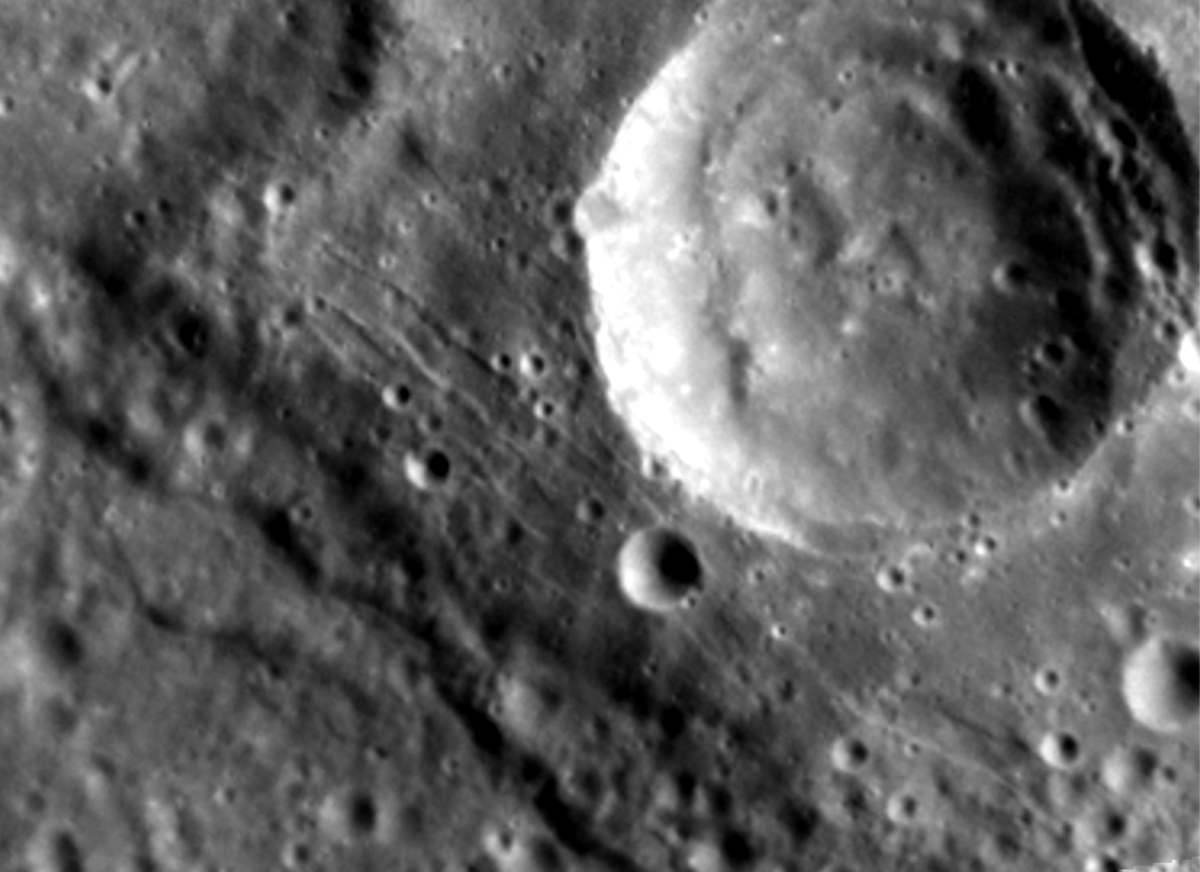OU News
News from The Open University
- Home
- OU academic publishes research confirming the continued shrinking of Mercury
OU academic publishes research confirming the continued shrinking of Mercury
Posted on • Science, maths, computing and technology

A study led by an Open University (OU) research student, Benjamin Man, has been published today in Nature Geoscience, providing strong evidence that Mercury is continuing to shrink.
It is widely confirmed that Mercury began to contract at least 3 billion years ago, and the rate of contraction has likely been decreasing since then. In total, models and observations agree that Mercury’s radius may have decreased by as much as 7 km, and this contracting has produced ‘lobate scarps’ – long, tectonic structures on the planet’s surface. However, evidence of recent tectonic activity on Mercury has so far been lacking.
While undertaking a global survey of Mercury using data from NASA’s MESSENGER mission (2011-2015), Benjamin discovered small, fresh landforms called grabens. These examples are secondary structures found on top of many of the larger compressional tectonic structures.
Benjamin described the significance of the finding and the context of his research:
“The discovery of small grabens associated with larger tectonic structures was serendipitous. As part of my doctoral studies, I have made the first geological map of a region of the planet and whilst doing so, I came across some of the most impressive examples of these.
“This led me to undertake a global survey where I looked at over 25,000 individual images where I discovered hundreds of small grabens. Our discovery of so many grabens is significant as it indicates that not only has Mercury’s tectonism been active recently, but it is also widespread across the surface of the planet.
“This is important as it confirms that global contraction is ongoing and raises questions regarding the thermochemical properties of Mercury’s interior.”
As these grabens are small, shallow landforms, they would not be expected to survive for hundreds of millions of years, let alone a billion years as they would quickly (geologically speaking) be erased by impactors.
The research team measured the depths of the grabens by measuring the length of shadows cast by the structures and using a bit of trigonometry that considered the position of the spacecraft and the position of the sun. They also predicted the maximum depth of the structures when they first formed using the length of the structures.
They then calculated how long it would take for them to infill and consequently, ascertained that many of the grabens likely formed in the past few hundred million years. The discovery of so many grabens on many large compressional tectonic structures shows that recent tectonism is widespread on Mercury and provides strong evidence for continued global contraction into the present day.
David Rothery, Professor of Planetary Geosciences at the Open University, who is the lead supervisor of Ben’s project and a member of the science team for BepiColombo comments:
“As well as finding many clear examples of small grabens atop lobate scarps, Ben found an even greater number of likely examples that we can’t be sure of, because the detail in the MESSENGER images is not quite clear enough.
“When the joint European/Japanese mission BepiColombo starts to send back even more detailed pictures from orbit about Mercury early in 2026 these ‘probable’ grabens will be among its targets, which will enable the scale and extent of recent fault movements on Mercury to be clarified – or possibly refuted if Ben and I are wrong. That’s how science works.”
Read the full paper on Nature Geoscience.